
Recommended Reading List 1
Starting Point - The literature on World War II in the Pacific is as vast as that sprawling ocean itself. But everything has a starting point. Here are a few recommendations on where to start. Click on the AMAZON button to see the order page for that book.
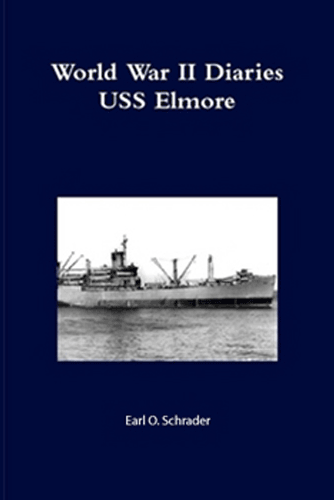
World War II Diaries - USS Elmore
Earl O. Schrader
These are the diaries of a 22-year-old storekeeper onboard the USS Elmore, during WWII in the South Pacific, in 1944 and 1945. Earl Schrader was based in San Diego, California. His wife and his only daughter were waiting for his return. First and foremost, this slim volume is a direct account, by an actual crew member of USS Elmore (APA-42), of that ship's exploits during the Pacific war.
This thin diary was the impetus for this website celebrating the USS Elmore. Both Earl Schrader and my father were Chief Petty Officers on the Elmore. They bunked together, they shaved together and they ate together. There is no doubt that they were friends. This is the book that started me on my odyssey to honor the crew of USS Elmore with this website. The book will give you an idea of what it was like to have actually been there during the war. It is highly recommended.
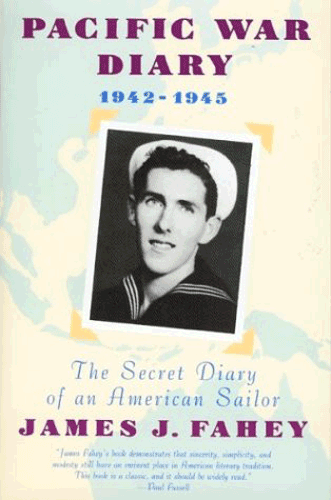
Pacific War Diary (1942-1945) The Secret Diary of an American Sailor
James J. Fahey
This best-selling diary is one of the most extraordinary documents to emerge from World War II. Despite regulations, seaman James J. Fahey secretly compiled a diary on scraps of paper throughout the long World War II naval campaign in the Pacific. His diary describes an average sailor's daily life during wartime and records a personal view of a major historic event. He served on the USS Montpelier (CL-57), a Cleveland-class light cruiser. Montpelier was commissioned in September 1942 and saw service in a number of campaigns in the Pacific. Montpelier received 13 battle stars for World War II service, as well as the Navy Unit Commendation ribbon for outstanding heroism in action against enemy Japanese combatant ships on the night of 1–2 November 1943, the Battle of Empress Augusta Bay, as a member of Cruiser Division Twelve. James Fahey was there for all of it and documented everything. He wrote about sailors' feelings, opinions of their officers, being tired, hungry and facing the horror of war.
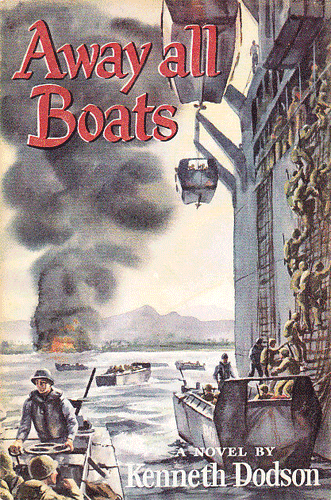
Away All Boats
Kenneth M. Dodson
This book is one of the classics of WWII literature, a vivid portrayal of the officers and sailors of the fictional amphibious attack transport USS Belinda (APA-22) in the Pacific during World War II. It was published in 1954 by Kenneth M. Dodson (1907–1999), who served on the USS Pierce (APA-50) during the war and used his experiences there as a guide for his novel. He was encouraged in his writing by the great American poet Carl Sandburg, who had read some of Dodson’s letters, written in the Pacific. The book became a best seller and went on to become a feature film.
Dodson’s presents a superb closeup of how amphibious warfare successively grew into the nearly-perfect machine for the island-hopping naval campaigning in the Pacific. It gives the reader the sense of seeing it happen - this is how it must have been - than in any other similar novel. The author said that he wanted to let people see how it really was on a ship (just like the USS Elmore) in the Pacific campaign of WWII. He succeeded brilliantly!
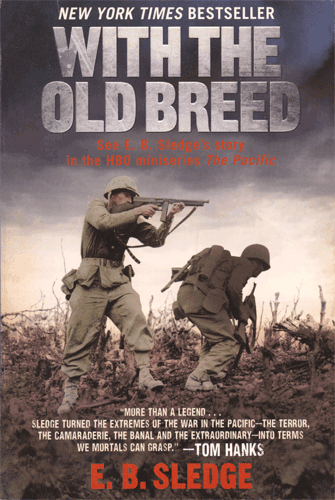
With the Old Breed: At Peleliu and Okinawa
E. B. Sledge
The purpose of transports like USS Elmore was to transport marines and army infantry to enemy shores. Since its first publication in 1981, With The Old Breed has been recognized as one of the best first-hand accounts of combat in the Pacific during World War II. The memoir is based on notes Sledge kept tucked away in a pocket-sized Bible he carried with him during battles he fought at Peleliu and Okinawa.This book is undoubtedly the best account by a U.S. Marine of the horrors of the Pacific campaign. War is very, very ugly, and Sledge doesn’t sugarcoat it. With the Old Breed became part of the basis of the HBO miniseries, The Pacific, which brought it to the attention of a new generation. A painful read but an essential one.
Eugene B. “Sledgehammer” Sledge was born and grew up in Mobile, Alabama. In late 1943, he enlisted in the U.S. Marine Corps. After basic training, he was sent to the Pacific Theater where he fought at Peleliu and Okinawa, two of the fiercest battles of World War II. Sledge initially wrote about his war experiences to explain them to his family, but he was persuaded by his wife to seek publication. Tom Hanks, who produced The Pacific, put it well: “Eugene Sledge became more than a legend with his memoir, With The Old Breed. He became a chronicler, a historian, a storyteller who turns the extremes of the war in the Pacific - the terror, the camaraderie, the banal and the extraordinary—into terms we mortals can grasp."
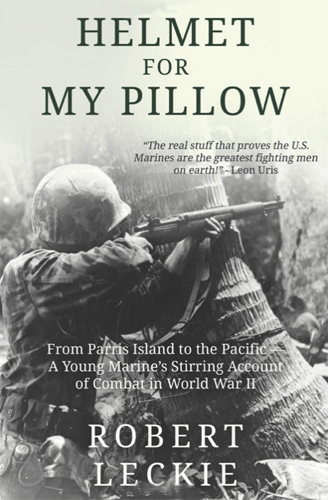
Helmet For My Pillow
Robert Leckie
Robert Leckie was an American author and historian. His service with the 1st Marine Division in World War Two as a machine gunner and a scout greatly influenced his later work. Helmet For My Pillow was first published in 1957. Along with E. B. Sledge’s With the Old Breed: At Peleiu and Okinawa, this book formed the basis for the HBO miniseries The Pacific.
This vivid and personal account of one marine’s journey through the course of the war in the Pacific in World War Two. Leckie was thrust into the heat of battle at Guadalcanal before seeing action across many islands of the Pacific until he was eventually wounded and evacuated from the island of Peleliu.
Yet this fascinating autobiography is not simply about Leckie’s fighting life over the duration of the war as it also records the camaraderie of his fellow soldiers, the adventures that he enjoyed during his time off service in Melbourne, Australia, along with the day to day life of a normal marine. This work is essential reading for anyone interested in uncovering the voice of a true marine who saw some of the bloodiest battles of World War Two.
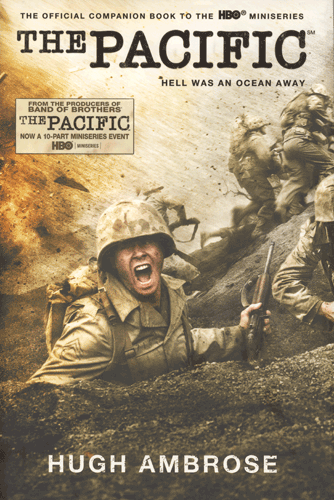
The Pacific: Hell Was An Ocean Away
Hugh Ambrose
This is the bestselling official companion book to the Emmy Award-winning HBO miniseries, The Pacific.
Between America's retreat from China in late November 1941 and the moment General MacArthur's airplane touched down on the Japanese mainland in August of 1945, five men connected by happenstance fought the key battles of the war against Japan. From the debacle in Bataan, to the miracle at Midway and the relentless vortex of Guadalcanal, their solemn oaths to their country later led one to the Great Marianas Turkey Shoot and the others to the coral strongholds of Peleliu, the black terraces of Iwo Jima and the killing fields of Okinawa, until, at last, the survivors enjoyed a triumphant, yet uneasy, return home.
In The Pacific, Hugh Ambrose focuses on the real-life stories of five men who put their lives on the line for our country. To deepen the story revealed in the HBO miniseries and go beyond it, adding two additional biographies. This narrative of the bravery and remarkable service of our armed services in the Pacific is well worth the effort to read.
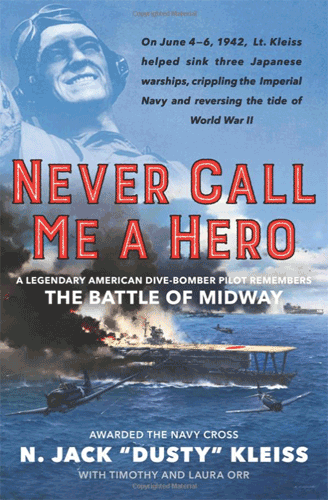
Never Call Me A Hero
N. Jack "Dusty" Kleiss
“Dusty” Kleiss was one of the heroes of the Battle of Midway. Just six months after the attack on Pearl Harbor, the U.S. desperately searched for its first major victory of the Second World War. On the morning of June 4, 1942, high above the tiny Pacific atoll of Midway, Lt. (j.g.) "Dusty" Kleiss piloted his SBD Dauntless into a near-vertical dive aimed at the the Japanese aircraft carrier Kaga, one of Japan’s most important capital ships. Dusty’s perfectly placed bombs struck the carrier’s deck, and Kaga erupted into an inferno from which it would never recover.
Launching again from USS Enterprise, Dusty returned to the air that same afternoon and, remarkably, would fatally strike another enemy carrier, Hiryu. Two days later, his deadeye aim contributed to the destruction of a third Japanese warship, the cruiser Mikuma, thereby making Dusty the only pilot from either side to land hits on three different ships, all of which sank—losses that crippled the once-fearsome Japanese fleet.
By battle’s end, the humble young sailor from Kansas had earned his place in history—and yet he stayed silent for decades, living quietly with his children and his wife, Jean, whom he married less than a month after Midway. Now his extraordinary and long-awaited memoir, Never Call Me a Hero, tells the Navy Cross recipient’s full story for the first time, offering an unprecedentedly intimate look at the the decisive contest for control of the Pacific in World War II and one man’s essential role in helping secure its outcome.
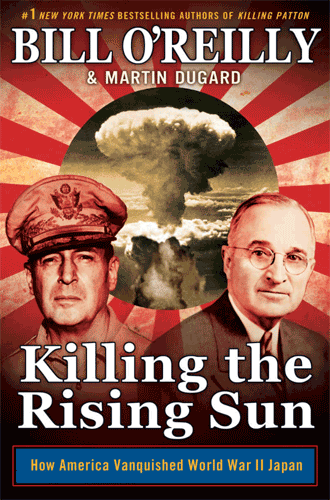
Killing the Rising Sun: How America Vanquished World War II Japan
Bill O' Reilly and Martin Dugard
Autumn 1944. World War II is nearly over in Europe but is escalating in the Pacific, where American soldiers face an opponent who will go to any length to avoid defeat. The Japanese army follows the samurai code of Bushido, stipulating that surrender is a form of dishonor. Killing the Rising Sun takes readers to the bloody tropical-island battlefields of Peleliu and Iwo Jima and to the embattled Philippines, where General Douglas MacArthur has made a triumphant return and is plotting a full-scale invasion of Japan.
Across the globe in Los Alamos, New Mexico, Dr. J. Robert Oppenheimer and his team of scientists are preparing to test the deadliest weapon known to mankind. In Washington, DC, FDR dies in office and Harry Truman ascends to the presidency, only to face the most important political decision in history: whether to use that weapon. And in Tokyo, Emperor Hirohito, who is considered a deity by his subjects, refuses to surrender, despite a massive and mounting death toll. This epic saga details the final moments of World War II like never before.
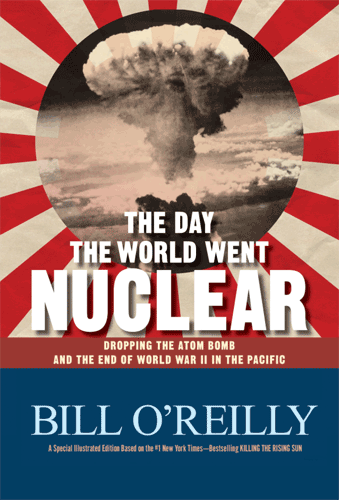
The Day The World Went Nuclear: Dropping The Atom Bomb And The End Of World War II In The Pacific
Bill O'Reilly
Autumn 1944. World War II is nearly over in Europe, but in the Pacific, American soldiers face an enemy who will not surrender, despite a massive and mounting death toll. Meanwhile, in Los Alamos, New Mexico, Dr. J. Robert Oppenheimer and his team of scientists are preparing to test the deadliest weapon known to mankind. Newly inaugurated president Harry Truman faces the most important political decision in history: whether to use that weapon.
While O'Reilly's previous book Killing the Rising Sun covered the entire war, this book focuses on the dropping of the atomic bombs on Hiroshima and Nagasaki. It has more details than is given in Killing the Rising Sun and some new information on the prior bomb raids on Tokyo. This is an excellent read for those who are interested in when, why, and how, the atomic bomb was created and used against Japan during the Second World War. The book does an excellent job of covering the political atmosphere of the time and what drove the decision to use the Atomic Bomb. O’Reilly did his homework on this subject and it shows. A very informative and interesting read, highly recommended.
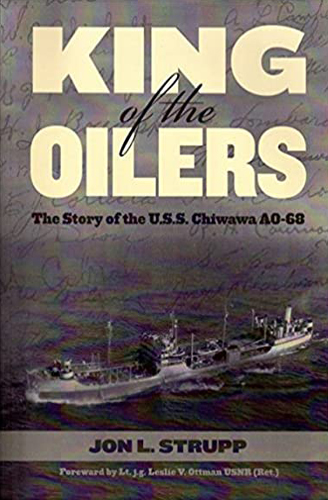
King of the Oilers – The Story of the U.S.S. Chiwawa AO-68
Jon L. Strupp
With entry into World War II, the United States of America faced a daunting task of delivering men and material on two distant fronts on opposite ends of the world. Due to this, a logistical system was developed like never seen before. This book tells the story of the fleet oiler, USS Chiwawa AO-68. How both men and machine, not primarily designed for war, were called from civilian life to defend their country and become part of the backbone of the navy helping to tip the balance in the Allies favor. Loaded with cargo consisting of kerosene, gasoline, diesel oil, Navy Special Fuel Oil, top side cargo, and passengers, the Chiwawa participated in nine trans-Atlantic convoys, delivering the goods to the European theater. Facing bad weather and the imminent threat of U-boats, the Chiwawa performed the delicate job of refueling the escort ships protecting the convoy while underway. When the war in Europe was won, the Chiwawa was transferred to the Pacific theater to confront ever present mines and two typhoons. This often overlooked aspect of World War II is examined using U.S. Navy records, crew interviews, diaries, and letters written during the war, telling the Chiwawa’s story through first-hand accounts of life at sea and land while visiting ports throughout Europe, Mediterranean, Caribbean and Pacific. This story is unique because the Chiwawa avoided scrapping after the war to return to civilian use, and serves to the present day on the Great Lakes as the ore carrier M/V Lee A. Tregurtha.
I have had the pleasure of getting to know the author, Jon Strupp. His dedication and insights in telling the story of the USS Chiwawa (AO-68) is beyond question. A very readable and informative book. Highly recommended.
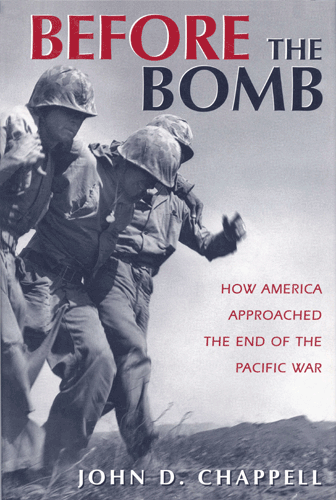
Before The Bomb: How America Approached The End Of The Pacific War
John Chappell
Almost forgotten in the haze of events that followed Nagasaki and Hiroshima, the summer of 1945 witnessed an intense public debate over how best to end the war against Japan. Weary of fighting, the American people were determined to defeat the imperial power that had so viciously attacked them in December 1941, but they were uncertain of the best means to accomplish this goal. Certain of victory―the "inevitable triumph" promised by Franklin Roosevelt immediately after Pearl Harbor―Americans became increasingly concerned about the human cost of defeating Japan.
Particularly after the brutal Iwo Jima and Okinawa campaigns, syndicated columnists, newspaper editorialists, radio commentators, and others questioned the necessity of invasion. A lengthy naval and aerial siege would have saved lives but might have protracted the war beyond the public's patience. Advertisers filled the media with visions of postwar affluence even as the government was exhorting its citizens to remain dedicated to the war effort. There was heated discussion as well about the morality of firebombing Japanese cities and of using poison gas and other agents of chemical warfare.
Chappell provides a balanced assessment of all these debates, grounding his observations in a wealth of primary sources. He also discusses the role of racism, the demand for unconditional surrender, and the government's reaction to public opinion in the decision to drop the atomic bomb. Compelling and controversial, this is the first work to examine the confusing and contradictory climate of the American home front in the months leading up to V-J Day.
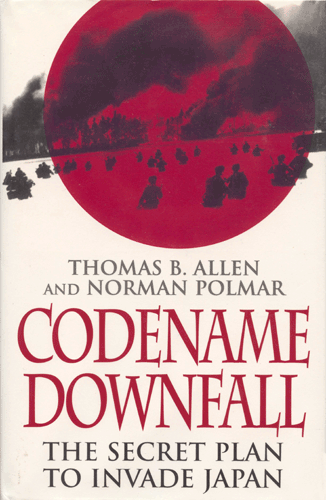
Codename Downfall: The Secret Plan To Invade Japan
Thomas B. Allen and Norman Polmar
The question at the heart of this powerful and disturbing book is this: what would have happened if atomic bombs had not been dropped on Hiroshima and Nagasaki, and the allies had had to invade Japan to end the war?
The authors show how the invasion – codenamed Downfall – could have prolonged the war by up to a year, turned Japan into a wasteland, and cost the lives of hundreds of thousands of American and Commonwealth troops and millions of Japanese.
The Japanese were prepared to fight to the death. Six thousand Japanese suicide planes, hundreds of midget submarines, and four million troops were prepared to defend the Japanese home islands. More disturbing, there were millions of women, teenagers and old men who would have used dynamite charges, farm tools, and even bamboo spears to repel the invaders. The invading allied troops would have met fanatical resistance at every step of the way. It is the height of irony that the destructive force of two atomic bombs actually saved lives, in the final analysis. Fascinating book!

